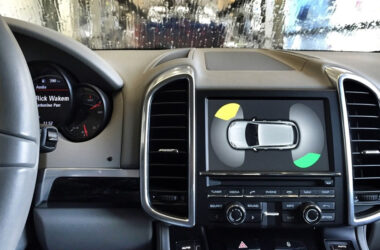Solving communication with clever tooling is akin to buying into a get-rich-quick scheme.
I’d like to think most of us recognize that good communication in itself is hard, but I do think a lot of us want to believe that it can be made easier with the right “hacks,” whether it’s daily writing routines or forcing our closet introverts to mingle or even just buying into a popular tool. Particularly around the context of work, it seems like better-talking-sooner would just make everything easier and increase untold amounts of hidden productivity.
Maybe it’s been because I’ve been playing Cities: Skylines1, but I was suddenly reminded of the parallels of effective communication with…traffic engineering. Specifically, I thought about this guide to the game by a real traffic engineer:
Traffic Engineer’s Guide to Traffic
And one of his pieces of advice:
The basic, textbook idea is simply three hierarchical levels of the network: local (2-lane roads), connecting (4- and 6-lanes) and regional (highways) (there’s really a fourth level, national, which in-game would be the outside connection, but we don’t build those so forget them). This organization is how pretty much all cities are built IRL.
The analog holds because both are network optimization problems. In the case of work-related communication challenges, actions like reorgs are akin to reshaping the network topology, while using different comm. tools (e.g., IM, Slack, email, wikis) are like using different roads and vehicles to connect point A to point B. In fact, the problem that Agilebits has above in getting too hooked onto Slack sounds like a traffic solution whereby every piece of road in a city is built as a highway2.
From a tooling standpoint then, the right way to communicate requires multiple levels, from local to global, with the appropriate “road” used for the message. Solutions can range from a quick Slack chat to a twice-revised email to a full-blown company-wide meeting, but we already have the vocabulary and means to traverse this network. A difference between good communicators and bad ones hinges on knowing which technique to use on what audience.
Traffic congestion happens in communication networks too. The most common form of this is the bloated email inbox — which has also become a badge of pride, in a twisted way — where emails get lost in the shuffle or don’t quite receive the attention they need3. The folks who are aware of rush hour can get around by timing their communique at opportune times; say, grabbing someone in the hallway as they return from lunch.
Granted, I’m starting to stretch the analogy here, but there’s something here that tickles both my engineering and managerial sides of the brain. Deep down, I know that the difficulty of communication doesn’t boil down to a tooling problem, and that different situations — network topologies — allow for a huge variety of solutions, a lot of which are not efficient and others which may work for the time being but do not scale with added complexity.
Or maybe I’m just attracted to the idea that a nebulous concept like communication can be, even if imperfectly, pinned to something as concrete as network management. Yea, it’s probably that.




